I’d forgive you if you’re not familiar with our Desert Island Cameras feature. It’s been exactly six months since the last installment, after all. Blame the editor. Now let’s get you up to speed.
Our Desert Island series is a recurring set of articles in which the CP writers and I draw on our unusually deep knowledge of special cameras to answer the question “If you could only have one camera of a certain type or from a certain brand, which would it be?”
And more importantly, we want you to tell us what your pick would be in the comments section.
In previous Desert Island Cameras articles we’ve picked from our favorite brands, picked our favorite film, discussed Leica with Bellamy Hunt (Japan Camera Hunter) and talked all things Pentax with former President of Pentax U.S., Ned Bunnell. Last time we talked about a camera type, the rangefinder, and today we’re picking our ultimate medium format film camera. This should be fun.
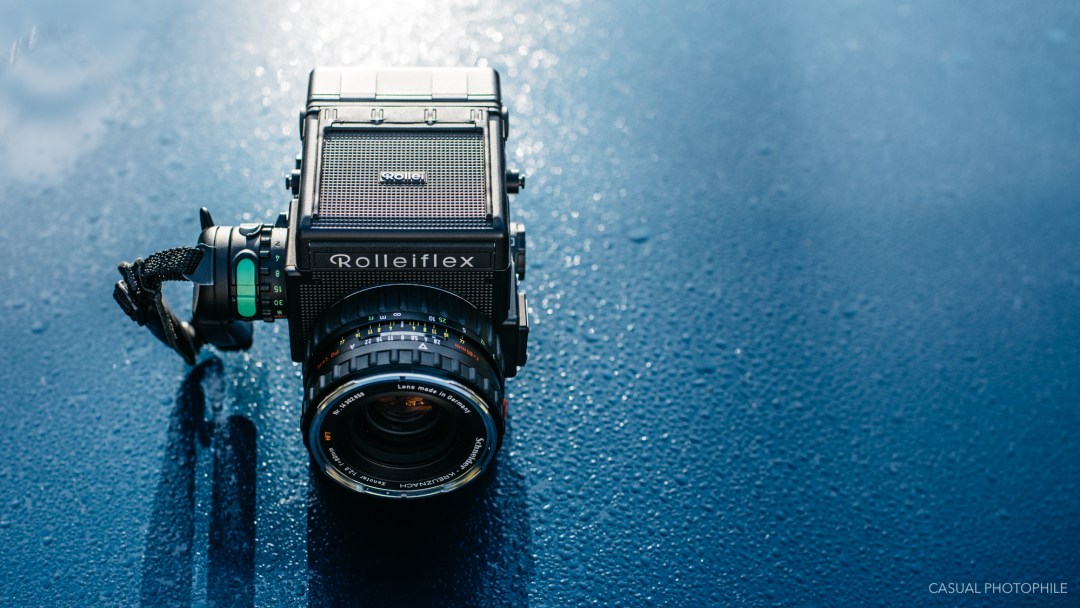
Jeb’s Pick – Rollei 6008
When picking a medium format camera to take to a deserted island, my first tendency was toward practicality. It seemed a sensible choice to pack a camera that was tough as a rock, used above a 6×4.5 negative ratio, and wasn’t reliant on batteries if it’s to last me the rest of my sunburned life. But we shouldn’t discount the value of appearance and optical superiority. So while my first instinct was something Russian and utilitarian, I’m instead going German with the Rollei 6008.
There’s a big difference between the Rollei that was famous for its medium format cameras for more than fifty years and the company that’s known today mostly for its nostalgia films and brand licensing. The 6008 was decidedly a product of the old Rollei — it’s an incredibly well-made and feature-rich camera boasting an uncompromising selection of exceptional lenses.
Medium format cameras generally aren’t known for having many bells and whistles. In fact, some of the best MF cameras don’t even have a light meter. But the 6008 is an exception to the rule. it’s got enough features to make it feel more like a professional 35mm SLR.
Multiple metering modes, shutter speeds up to 1/1000th of a second, interchangeable film backs, exposure compensation, mirror lock-up, variable flash sync, depth-of-field preview — shall I go on? Okay. Automatic film transport. Lenses from Zeiss, Rollei and Schneider. That’s still not everything. The 6008 is a professional’s camera — a medium format camera that wants to get out of the studio and show that it’s capable of handling any real-world photographic challenge.
And it doesn’t hurt that I love its design, with its black and green and red coloring, its mix of metal and rubber, its rotating and lockable hand grip, and that Euro-in-the-eighties all-lowercase sans serif typeface. Desert island or not, the Rollei 6008 is very likely the only camera I would ever need.
See what James thought about the Rollei 6008 in our review.
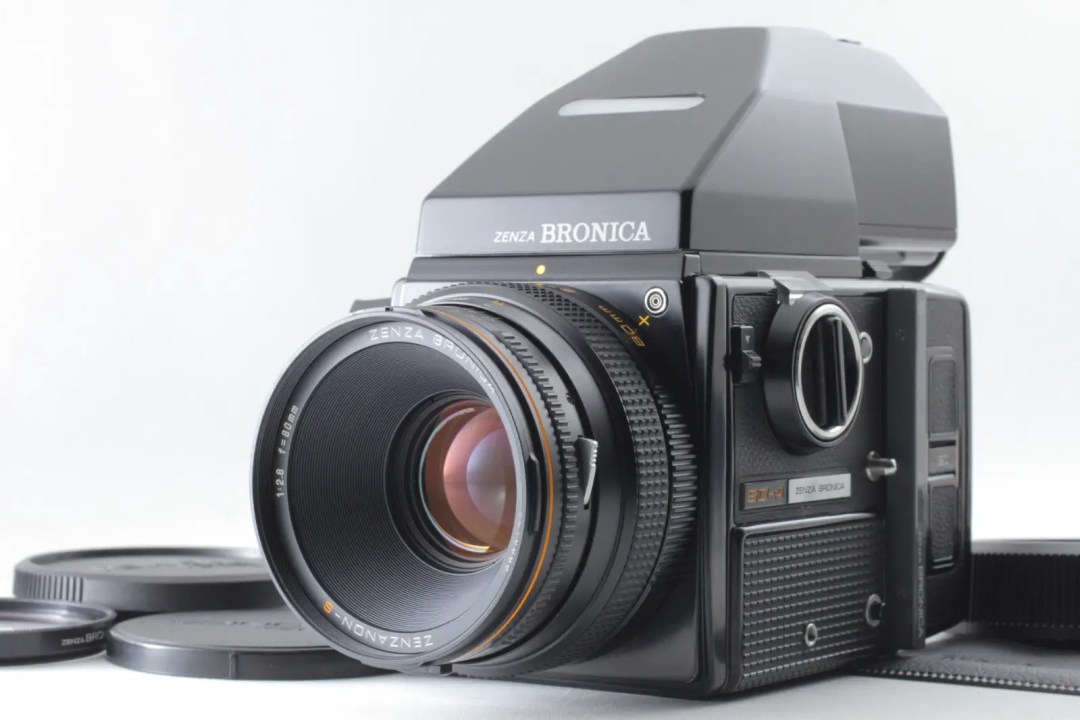
Charlotte’s Pick – Bronica SQ-A
My choice for the one medium format camera I’d take to a desert island is the humble, solid Bronica SQ-A. It was my first medium format camera, and like the cheap tank of a car in which most people learn to drive, you never forget your first. Paired with a 50mm f/3.5 lens, it’s the perfect combination of simple design and easy-to use operation (though that doesn’t mean my first shot won’t always be accompanied by swearing, removal of the dark slide, then shooting again).
My model is missing its winder crank, but as I tend to shoot handheld with the speed grip attached, that makes no odds to me. With a huge, clear waist-level viewfinder and the shutter button moved to a more ergonomic position, street (well, jungle) and candid photography is easy. Mind you, the loud shutter slap would probably scare away some of the more timid inhabitants of my desert island – it’s definitely not discreet. The only feature I’d miss is a proper B mode – imagine the star trails you could capture at night, on a deserted island.
Paired with a slow Ilford black-and-white film (Delta 100 would be my choice), a nice dark cave to develop in, and a volleyball to whom I could explain my motivations behind each shot (poor Wilson), I think I’d be happy for a good long while. And if it stopped working due to sand or salt, I could still use the hefty Bronica to easily crack open coconuts.
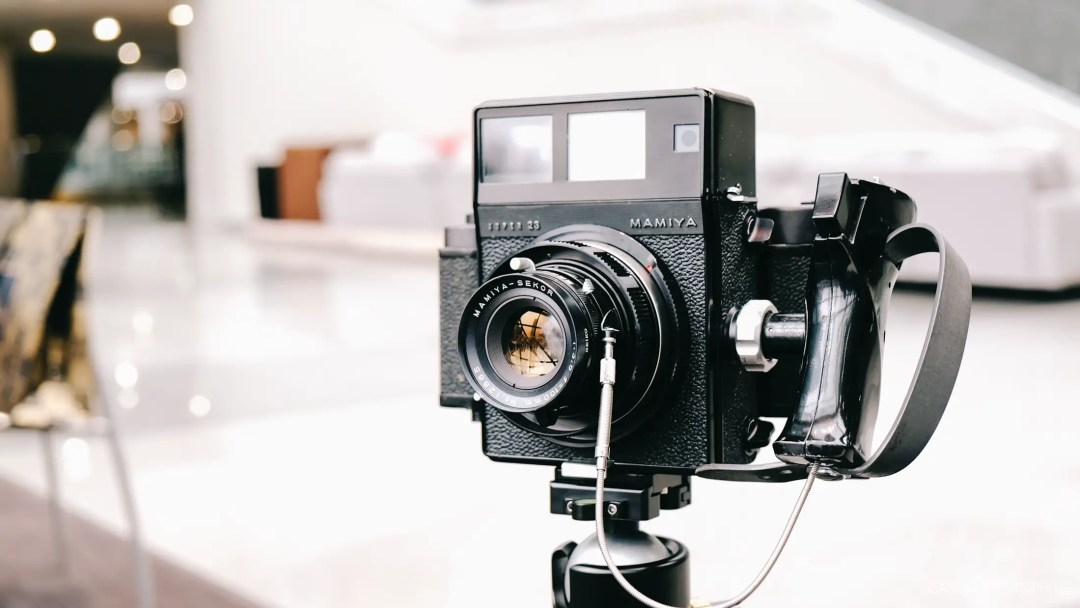
Chris’ Pick – Mamiya Super 23
The primary issue with picking a desert island camera is deciding whether to follow the head, or the heart. My heart adores the Pentax 67. This is easily explained. The Pentax Spotmatic is one of my favorite cameras of all time, in all of its rugged, compact simplicity, and the Pentax 67 is the same camera writ large. It’s a super-sized Spotmatic with the glorious addition of a contoured wooden handle for ergonomic and brawling purposes. The Pentax 67 offers solid ergonomics, top notch Takumar glass, and decades of variants to choose from.
Yet if I’m being wise, I would follow my head. And I believe the wise choice is the Mamiya Super 23. The Mamiya system contains a total of ten lenses and an array of interchangeable backs ranging from 6×4.5 to 6×9, effectively broadening the range of available focal lengths. While the stamped-aluminum Mamiya may lack the Pentax’s appealing form, it is a functional masterpiece. The brick-like Mamiya offers a tilting bellows mount for the interchangeable film backs, rangefinder coupling, and switchable framelines for 100/150/250mm lenses. That’s serious versatility.
All of this ignores the system’s greatest merit – Mamiya’s glorious lenses. They’re contrasty, resistant to flare, and all feature leaf shutters allowing flash-sync at all speeds. Removing the film back and affixing a ground-glass screen allows the shooter to rapidly re-angle the film plane and focus with ease.
It moves, my word, it moves.
This ingenious system allows the Mamiya to achieve a greater degree of creative flexibility than with virtually any camera I’ve come across. If I’m stuck on a desert island with the Mamiya for the rest of my life, at the very least I’ll never be bored.
See Chris’ full review of the Mamiya Super 23.
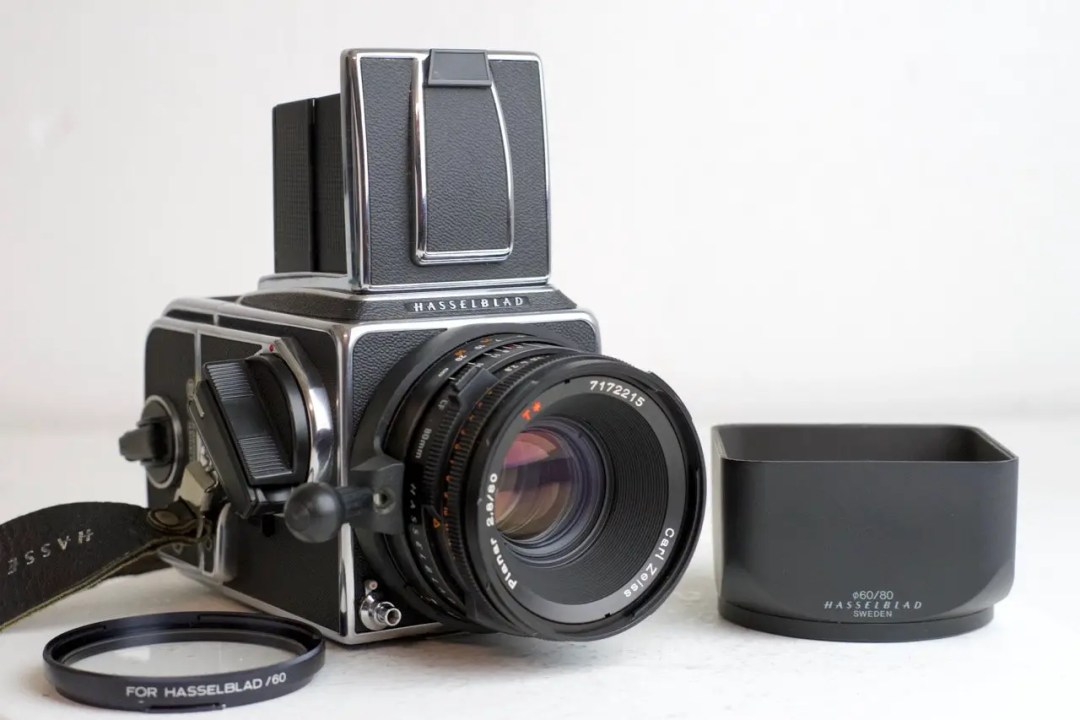
James’ Pick – Hasselblad 500 C/M
The Hasselblad 500 C/M is an obvious and somewhat boring pick – but hear me out. Before I’d ever held or even seen a Hasselblad in the metal, I’d shot plenty of medium format cameras. I’d even shot many MF cameras that were at least somewhat influenced by the design of the Hasselblad – Mamiya’s RB and RZ, the smaller 645 format SLRs from Pentax and others. I’d always come out of those experiences wondering, “How much better can a Hasselblad be?”
The first time I held a Hasselblad, that question was answered. The difference is profound.
It starts with its size. The Hasselblad is easily held in the hand, unlike a lot of medium format cameras, and there’s really no comparing it to some other SLR style machines. Different beasts entirely, but look for example to the Pentax 67. Shooting the 67 is like wearing a rubber boot clamped tight in the jaws of a rusty bear-trap, while the Hasselblad is like dancing in a glass slipper.
Its ergonomics are surprisingly perfect. There’s a simplicity of control that just feels wonderful. Everything is where it needs to be, and there’s really nothing here that we won’t use regularly.
Lastly, its build quality is unrivaled. The Hasselblad 500 C/M is such an elegant camera that it makes other machines seem like tractors. Its clockwork mechanisms whirr and click and ratchet into place with a precision that I’ve never felt in another medium format camera. Advancing the film and cocking the shutter is like winding the mainspring of a wristwatch, where the incremental advance of gears can be felt through the fingertips. It’s an impossible thing to quantify, and I wouldn’t have believed it myself before I’d spent a few months with one. But the Hasselblad really is that good.
I mean, NASA brought a Hasselblad to the Moon, right? That’s about as much a desert island as one will find.
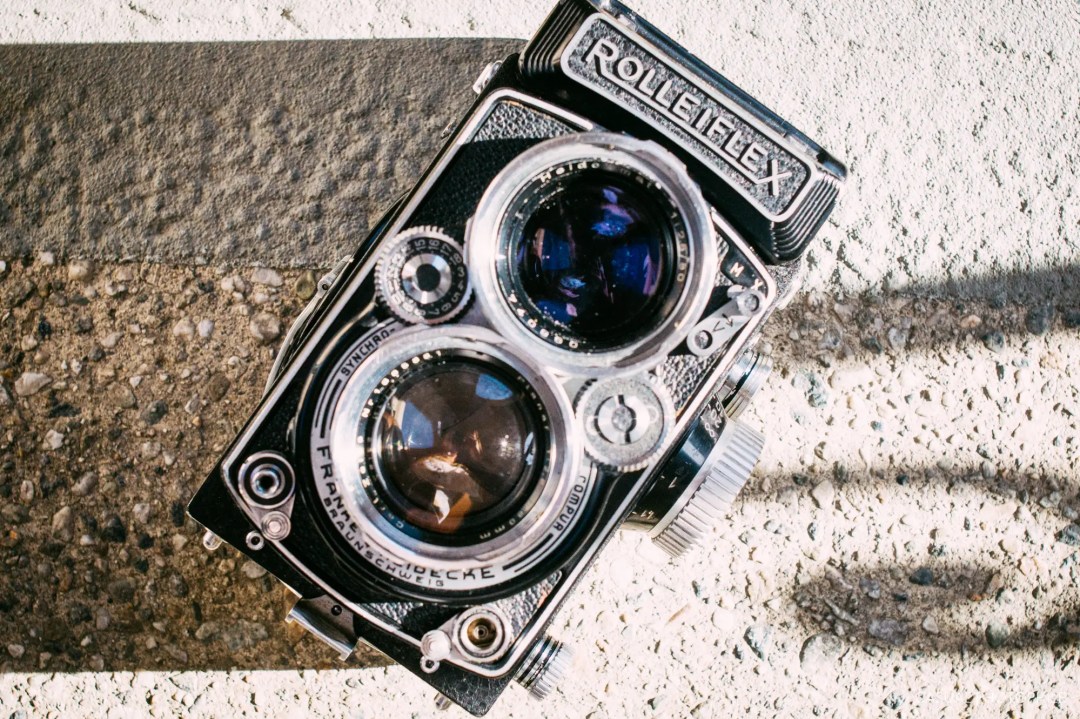
Josh’s Pick – Rolleiflex 2.8 Planar
West Coast hip-hop legend DJ Quik once said, “Life is much too short for you to not be fly.” I agree. So for this medium format desert island article, I’m picking the flyest of all medium format cameras to take to the grave – the Rolleiflex 2.8 Planar.
The Rolleiflex 2.8 Planar is the TLR all TLRs wish they could be. It’s gorgeous, and the envy of shooters, collectors, and manufacturers alike. Its beautiful Art Deco design has been widely copied, but its ergonomics, imaging capability, and signature high quality of build has never been matched. None of the Rolleiflex TLR copies have the same charm and raw quality as the real thing, and I suspect that no other medium format camera out there does either.
Visual appeal and legendary mystique aside, what makes the Rolleiflex 2.8 truly great is its lens. The Carl Zeiss 80mm f/2.8 Planar found on the Zeiss variants of the Rolleiflex 2.8 is my favorite lens on any format or system, film or digital. It’s one of the only lenses I know of that offers smooth, understated vintage character while also producing a technically incredible image. Modern lenses with modern accoutrements may produce sharper images, but none of them can recreate the look of an old school Carl Zeiss 80mm f/2.8 (for proof, see my full review).
Other medium format cameras may be able to shoot different formats, mount different lenses, and change between different films on the fly, but none of them can make an image pop quite like a Rolleiflex 2.8 Planar. It might look a little ostentatious these days but hey, life’s way too short for you to not be fly.
And those are our picks. Pretty amazing machines, but what do you think? Was your favorite medium format camera mentioned or passed over? Let us hear about it in the comments.
If you like this piece, check out the rest of our Desert Island Cameras series to see which camera we’d choose if we could only have one.
Want to find your own medium format camera?
Find one on eBay
Find one at our own F Stop Cameras
Follow Casual Photophile on Facebook and Instagram
[Some of the links in this article will direct users to our affiliates at B&H Photo, Amazon, and eBay. By purchasing anything using these links, Casual Photophile may receive a small commission at no additional charge to you. This helps Casual Photophile produce the content we produce. Many thanks for your support.]
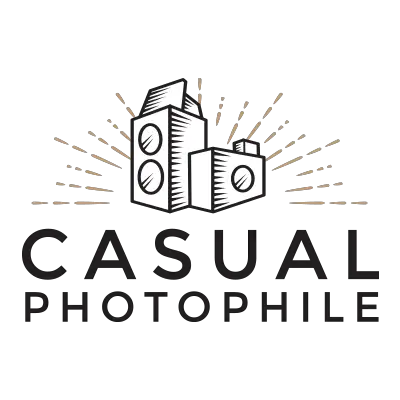
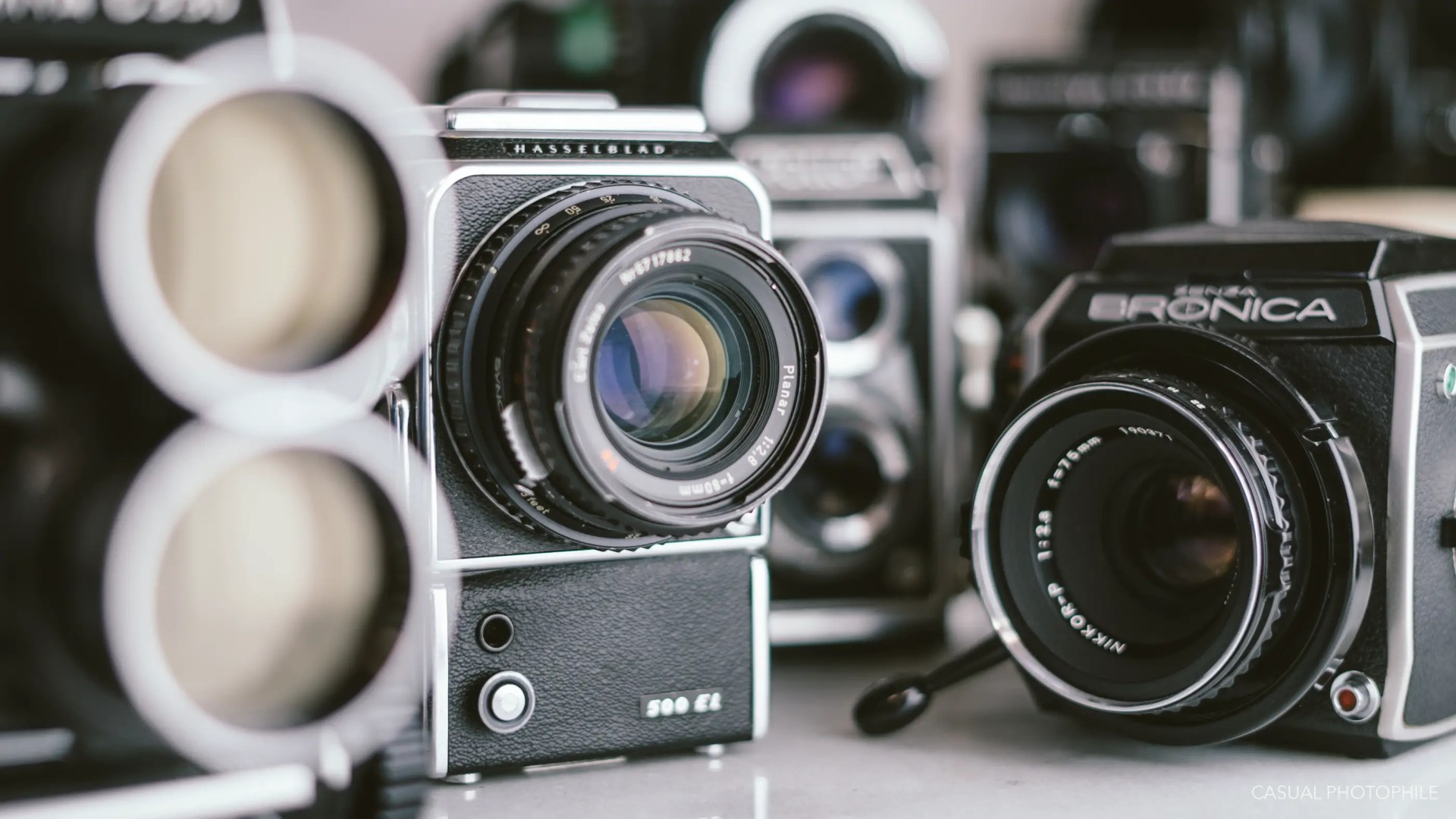
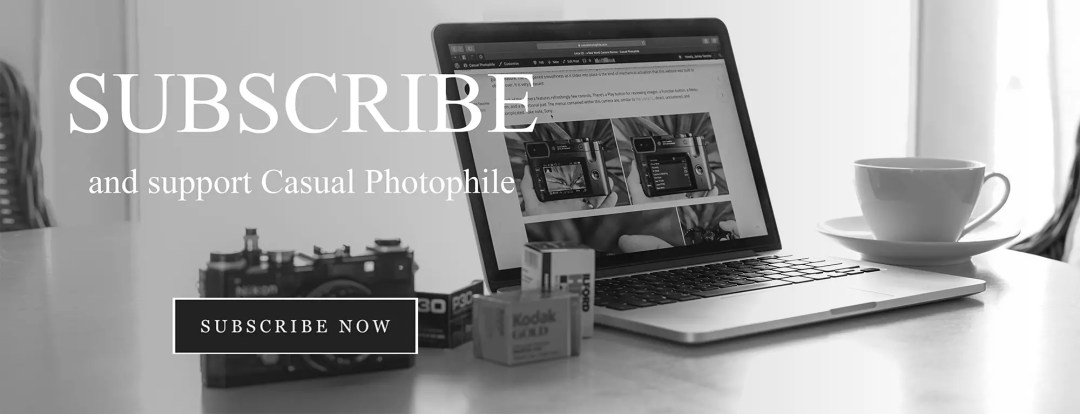
Canny article:) My choice would be a TLR-like my Yashica 24:) Light, easy 2 carry, easy 2 load etc. And I would get 24 shots as opposed 2 other similar cameras!